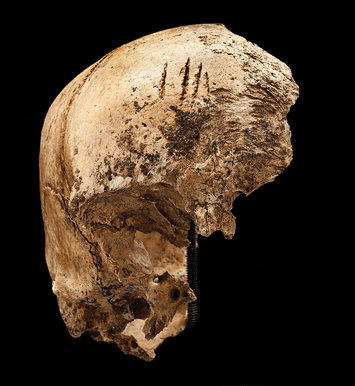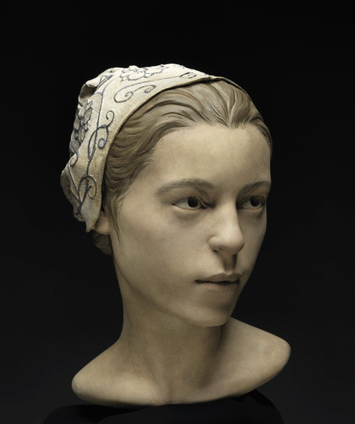Chilling Discovery at Jamestown
July/August 2013
 In the fall of 1609, Powhatan Indians laid siege to Jamestown, Virginia, trapping 300 settlers inside the settlement’s fort. Cut off from food supplies, only 60 would survive the winter ahead, known to history as the “Starving Time.” According to survivors’ accounts, they consumed vermin and boot leather, and, as the winter grew harsher, some ate the dead. But firsthand reports can be unreliable and there has never been direct evidence for cannibalism at Jamestown. “I never believed those accounts,” says William Kelso, chief archaeologist for the Jamestown Rediscovery Project. “I thought they were trying to make the Virginia Company [the colony’s sponsor] feel bad so they would send more supplies.”
In the fall of 1609, Powhatan Indians laid siege to Jamestown, Virginia, trapping 300 settlers inside the settlement’s fort. Cut off from food supplies, only 60 would survive the winter ahead, known to history as the “Starving Time.” According to survivors’ accounts, they consumed vermin and boot leather, and, as the winter grew harsher, some ate the dead. But firsthand reports can be unreliable and there has never been direct evidence for cannibalism at Jamestown. “I never believed those accounts,” says William Kelso, chief archaeologist for the Jamestown Rediscovery Project. “I thought they were trying to make the Virginia Company [the colony’s sponsor] feel bad so they would send more supplies.”
 Now the discovery of a partial human skull and tibia in a kitchen cellar inside the fort has substantiated the survivors’ claims. Kelso’s team found the remains, which belonged to a 14-year-old girl, in a trash pile with the bones of butchered horses, dogs, rats, and mice. Someone trying to separate flesh from the bones with a knife left marks on the skull, jawbone, and tibia. The marks appear to have been made inexpertly, or by someone who was hesitating to butcher the bones. “There’s no question that this is evidence for survival cannibalism,” says Kelso. “It’s grim and it’s a tough story to handle. But it points out just how close Jamestown came to failing.”
Now the discovery of a partial human skull and tibia in a kitchen cellar inside the fort has substantiated the survivors’ claims. Kelso’s team found the remains, which belonged to a 14-year-old girl, in a trash pile with the bones of butchered horses, dogs, rats, and mice. Someone trying to separate flesh from the bones with a knife left marks on the skull, jawbone, and tibia. The marks appear to have been made inexpertly, or by someone who was hesitating to butcher the bones. “There’s no question that this is evidence for survival cannibalism,” says Kelso. “It’s grim and it’s a tough story to handle. But it points out just how close Jamestown came to failing.”